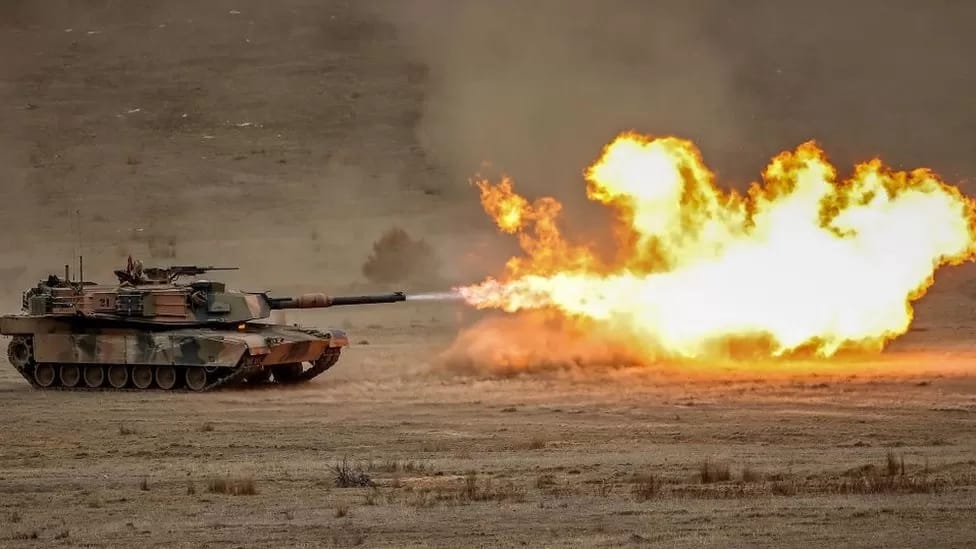The United States has declared its intention to provide Ukraine with depleted uranium tank shells as part of a comprehensive military and humanitarian aid package valued at over $1 billion (£800 million). This announcement comes at a time when tensions between Ukraine and Russia have reached a critical juncture, with geopolitical implications reverberating across the international stage. The decision has elicited a strong reaction from Moscow, sparking concerns and debates over the use of depleted uranium in warfare and its potential consequences. In this report, we delve into the details of this development, along with other significant events that unfolded alongside it.
Russian Condemnation and Controversy Surrounding Depleted Uranium Shells
Russia wasted no time in condemning the US decision to equip Ukrainian forces with depleted uranium tank shells. These projectiles, designed for the formidable M1 Abrams tanks set to be delivered to Ukraine, have the capability to penetrate even the most robust conventional tank armor due to the extreme density and sharpening on impact. However, the controversy surrounding depleted uranium lies in its origins – it is a by-product of uranium enrichment, stripped of most radioactive material. While it cannot generate a nuclear reaction and is considered “considerably less radioactive than natural uranium,” according to the International Atomic Energy Agency, concerns persist about its potential long-term effects.
In March, the United Kingdom faced similar criticism when it announced plans to send depleted uranium shells to Ukraine for its Challenger 2 tanks. President Vladimir Putin’s reference to these shells having a “nuclear component” sparked a rebuttal from the UK Ministry of Defence, which emphasized that depleted uranium had been used in armor-piercing shells for decades and accused Moscow of deliberate misinformation. The UN Scientific Committee on the Effects of Atomic Radiation found no significant poisoning linked to depleted uranium exposure, although the International Atomic Energy Agency warned of potential radiation risks for those handling fragments of these rounds.
Unconfirmed Drone Attacks Near Moscow and Rostov-on-Don
Simultaneously with the US announcement, unconfirmed reports emerged of suspected drone attacks targeting Russian cities Rostov-on-Don and near Moscow. Disturbing videos circulated on social media, appearing to show a blast in central Rostov, where Governor Vasily Golubev confirmed one person sustained minor injuries, and several cars suffered damage. Moscow Mayor Sergei Sobyanin reported that a drone aimed at Ramenskoye had been successfully downed, with no resulting damage. While the origin and motives behind these attacks remain unclear, they serve as a stark reminder of the escalating tensions in the region.
US Reverses Decision, Announces Military Aid Package for Ukraine
The announcement of this new security package for Ukraine coincided with the visit of top US diplomat Antony Blinken to Kyiv. The aid includes the delivery of 120mm depleted uranium tank rounds, worth $175 million, as part of a broader arsenal of military equipment. In addition to the controversial munitions, the US will supply anti-armor systems, tactical air navigation equipment, and extra ammunition for Himars missiles. National Security Council spokesman John Kirby defended the move, characterizing depleted uranium shells as “a commonplace type of munition” and stressing their significance in arming Ukraine’s Abrams tanks effectively.
Antony Blinken, speaking during his visit to Kyiv, emphasized that this assistance was aimed at sustaining Ukraine’s efforts and building further momentum. However, the Russian embassy in Washington swiftly denounced the decision, labeling it “an indicator of inhumanity” and accusing the US of being in denial about the Ukrainian military’s so-called counter-offensive.
As Ukraine continues its struggle to regain territorial control and international tensions simmer, the repercussions of this US military aid package, along with the controversy surrounding depleted uranium munitions, are poised to reshape the dynamics of the ongoing conflict in the region.















